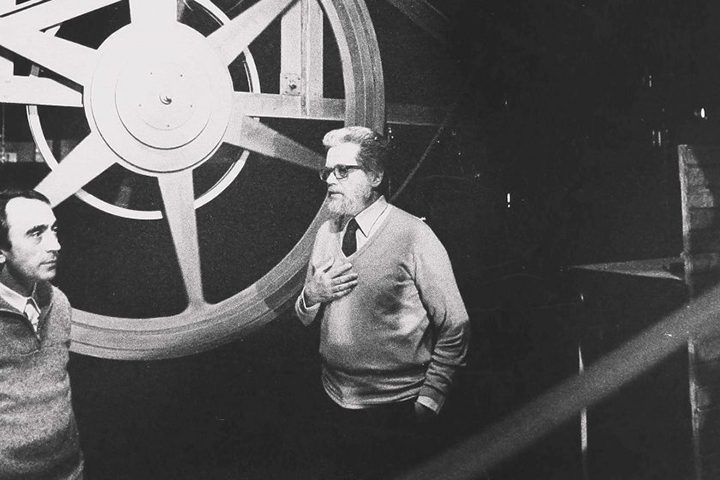Debutto: Roma, Teatro Argentina, 30 ottobre 1978 (filmato RaiTeche)
| Traduzione | Emilio Castellani, Federico Federici |
| Riduzione | Luigi Squarzina |
| Regia | Luigi Squarzina |
| Regista assistente | Gianni Fenzi |
| Assistente alla regia | Adriano Dallea |
| Scene e costumi | Uberto Bertacca |
| Musiche | Stefano Marcucci |
| Movimenti mimici e coreografici | Angelo Corti |
| Produzione | Teatro di Roma |
Interpreti
| La compagnia | Rosa Di Lucia Ivo Garrani Loris Peota Gabriele Villa Antonio Cascio Relda Ridoni Claudio Sora Stefano Lescovelli Adele Pellegatta Anna Maestri Vittorio Congia Toni Ucci Francesco Calogero Stefano Angelone Ernesto Colli Maurizio Mattioli Monica Ferri Gianfranco Cercone Marika Ferri |
Il dramma, mai rappresentato in Italia, viene messo in scena non a caso qualche mese dopo il rapimento e l’uccisione di Aldo Moro. E’ un momento drammatico per l’Italia martoriata dalla violenza e dal terrorismo e la lettura di Squarzina tende a individuare analogie tra le condizioni della Germania nazista e i vari movimenti espressione di violenza e di sopraffazione che agiscono in quel periodo in diversi paesi e in primo luogo in Italia. Il regista avverte che la catastrofe non può essere considerata esclusivamente un prodotto dell’orribile società nazista, ma può riprodursi, sia pure in forme diverse, in qualsiasi altra società in cui l’autoritarismo finisca per soffocare la libertà e per manipolare le coscienze dei singoli e delle masse.
Quanto alla dinamica dello spettacolo, Squarzina riduce gli originari ventiquattro quadri del testo a sedici, assicurando l’unitarietà con il motivo dominante della lettura dei giornali e dell’ascolto della radio e con un’impostazione dello spettacolo che doveva essere divertente e insieme istruttiva. E il regista ci riesce accentuando la tecnica del montaggio e deformando satiricamente i personaggi fino a renderli vignette oppure fondendo le scene senza far prevalere il didatticismo sul divertimento.
Lo spettacolo ebbe un grande successo di critica e di pubblico e un corredo di studi sontuoso: le Note di regia, due saggi di grande spessore, un corso monografico al DAMS di Bologna e una mostra su Piscator e sul teatro della Repubblica di Weimar.
Il servizio Rai
Si ringrazia il teatro di Roma per la concessione dell’utilizzo del materiale fotografico.

